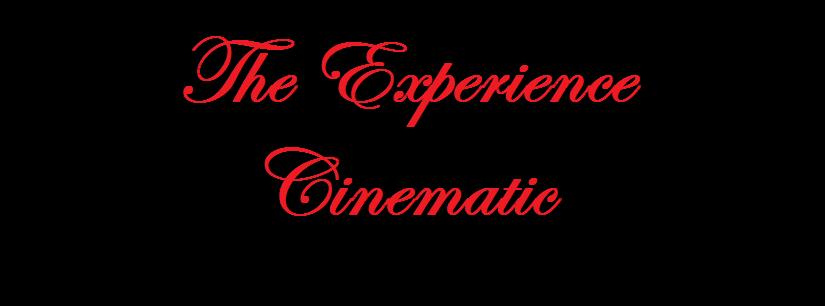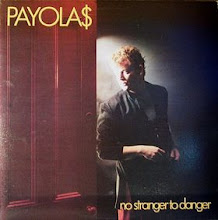
At the end of my review of the original Wolf Man, I stated that Joe Johnston and Benicio Del Toro had the opportunity to take the ambitious but flawed original and make an even greater film, unlike so many remakes which can go nowhere but down. While Johnston and Del Toro’s Wolfman never exactly achieves being greater than the original, at the risk of getting flack from classic horror fans, I am going to say that it equals the original, carving out its own path, with its own strengths and suffering from different weaknesses. Furthermore, at the risk of getting outright slaughtered, I am also going to say that the new Wolfman is the more enjoyable film.
The new Wolfman, set in the late 1800s, follows the story of Lawrence Talbot (Del Toro), a stage actor called home by his missing brother’s fiancée Gwen (Emily Blunt). Upon his arrival at the decaying family home, headed by distant patriarch, Sir John Talbot (Anthony Hopkins), Lawrence discovers that his brother’s body has been found horribly mutilated. At the request of Gwen, Lawrence stays to try and solve what happened, and in the process winds up at a gypsy encampment just as it is attacked by a menacing animal, leaving Talbot injured. Soon enough, he begins to suffer strange symptoms, and becomes drawn into a greater and more personal mystery than he had originally anticipated.
Early in the film, a scene is shown of Lawrence performing Hamlet on stage, and to those familiar with Shakespeare’s masterpiece, the foundation upon which the new Wolfman has been built will be immediately recognizable. While the original Wolf Man was certainly tragic, the new Wolfman is an outright familial tragedy, dealing with madness, various Oedipus complexes, and murder. Many of the basic elements from the original film remain, yet the new production sets about crafting its own identity as a horror version of Shakespeare's play and refusing to be slave to what has come before. While it never quite succeeds in being the horror genre’s Hamlet, the ambition on the part of the filmmakers shows in every frame of the film, a passion that is often missing in most horror remakes.
The original film is structured through a series of oppositions which Larry Talbot (Lon Chaney Jr.) finds himself caught between with no real sense of control. The film pits institutionalized patriarchy and marginalized matriarchy against one another, each side being aligned with other opposing concepts: rationalism and emotionalism; science and superstition; etc. While rich in complex ironies, the original film is very clean and organized in its presentation of these concepts, both on the literal and figurative levels, such the town embodying civilization and the woods becoming the center of uncontrolled instincts. While the approach works, it also helps to make the original film a very stilted affair as it tries too hard to lay everything out in an easily digestible manner, a problem point for a film that deals with themes of the repressed and uncontrollable.
The new Wolfman does away with such oppositions, as the complex issues are internalized in Lawrence himself rather than being represented by external forces in the narrative. This results in a far more driven and emotional Lawrence, who actively fights back against his own internal impulses and conflicts which stem from his childhood experiences. As played by Del Toro, Lawrence is a man whose calm reserve is little more than a thin mask for the turmoil going on beneath the surface. It is a very physical performance, even without the elaborate makeup, and Del Toro manages to utilize his body language to do much of the work for him, even working in gestures that are reminiscent of Chaney Jr. The Wolfman has been a long admitted passion project for Del Toro, and he clearly is giving it his all here.
The shift in how the underlying issues of the film are organized is further reflected in the presentation of the town and woods, which are no longer distinct entities that boarder one another, but instead bleed into each other, enveloping all who reside there in its dark, murky aesthetic. London, which has a large presence in the film, is the new site of supposed rationalism and progression, and the place in which we first find Lawrence. Yet London itself is a visually dark and chaotic mess, an urban hell that itself is torn asunder by the issues it denies and mocks in one of the film’s most memorable sequences.
I really should take a moment to talk about the visual look of the film, from the wonderful production design to the gorgeous cinematography of Shelly Johnson. The world created by director Johnston and his crew is nothing short of spectacular, visually emulative of the horror films of old, and designed in a manner that manages to evoke stage play like artifice without breaking the sense of a lived in world. There are frames that are so rich in detail that I cannot wait until the Blu Ray is released to study them. Only a few moments of CGI mar the film, particularly a scene with a CGI bear that really wasn’t necessary, but the sheer level of practical effects in the film is amazing given the era in which we live, the standout being the makeup effects of Rick Baker.
Still, the main reason the film works is because of its cast, primarily Del Toro and Hopkins. While Del Toro’s work has already been covered, Hopkins needs to be singled out because, if for no other reason, he seems to actually be giving the film his all rather than coasting for a paycheque as he has often done in the past ten years. While it is hard to discuss his character without spoilers, Hopkins manages to sell even the oddest of moments by giving every action of Talbot’s a sense of giddy, insane glee without hamming it up, except where appropriate.
The film does have its failings. While the film is double the length of the original, the opening third of the film still feels like it is going by at a record pace. Some scenes, such as the first meeting between Lawrence and his father, feel as if entire sections of the scene have gone missing. These scenes function well enough, but they don’t always allow the atmosphere to sink in as much as one would like. Similarly, while the werewolf scenes are for the most part expertly handled, some of these scenes towards the climax of the film begin to feel a little over the top, emulative of a superhero film rather than a horror film. Such moments are brief, but are annoying none the less. The same issue plagues some of the film’s gore, though it was nice to see the filmmakers embrace an R rating rather than toning the picture down for a PG-13.
Still, The Wolfman is a worthy remake. It manages to make entire errors of its own, but nothing that outright sinks the film. Furthermore, in a time where old fashioned horror filmmaking is in short supply, The Wolfman manages to evoke the past in a way that doesn’t feel like it is merely recycling the past, and is well worth checking out.


No comments:
Post a Comment
What Is Your Cinematic Experience? Post Here!